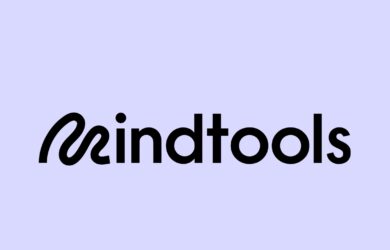In today’s fast-paced and hyper-connected business world, the “always-on” culture has become the norm, leaving little room for personal well-being and balance.
Think about it: Every day, employees are responding to hundreds of emails and instant messages, attending back-to-back meetings, and working on projects with tight deadlines. When do they have time to take a breath? To walk away from their desk without feeling like they are missing out? To take some time to recharge so they can return fresh and more productive?
This constant demand for productivity and responsiveness can take a toll on employees’ physical and mental health, leading to higher stress and anxiety levels, lower productivity, increased turnover rates, and potentially costly mistakes.
Unfortunately, even when employee well-being is known to be an issue, it is often overshadowed by the pressure to complete projects, launch initiatives, and achieve business goals.
So, what’s the answer?
While new well-being programs and benefits may help some employees, the underlying organizational issue of how the work is done still needs to be fixed. It requires a dismantling of the always-on culture.
Leaders can pave the way for that to happen by re-engineering how work and daily schedules are structured to provide employees with the necessary space to work with reduced stress, increased energy, and improved mental clarity.
Let’s explore three actionable ways to incorporate well-being throughout the workday.
1. Make space in the workday for breaks
In today’s fast-paced work environment, the constant influx of information can overwhelm our cognitive capacities, leaving little time for processing and reflection. And continuous task-switching with no break in between can deplete our physical and mental energy throughout the day, and lead to increased stress levels and diminished creativity.
Prioritizing regular breaks during the workday is a crucial building block for employee well-being.
Applying this can be easy:
- Incorporate dedicated break times into your daily schedule to remind yourself and your team to step away from work.
- Avoid reaching for your phone or responding to work matters, so you can truly disconnect and recharge.
- Gaze at the clouds, go for a walk outdoors, or connect with a colleague.
- Consider holding shorter meetings and encouraging participants to take a stretch break or walk after the meeting concludes.
2. Make setting boundaries cool again
Let’s face it; the fear of missing out is real and can drive us to overcommit ourselves. Sometimes, we assume we must attend every meeting or take on every new project, even when it’s not explicitly required.
This sense of obligation is often self-imposed, assuming that others expect our constant availability. However, it’s crucial to recognize that team members should have the freedom to evaluate their workload and confidently say no when necessary.
While specific tasks are non-negotiable, it’s essential to create a work culture where setting boundaries is not only accepted but encouraged.
Putting this into practice:
- Foster a culture that values and respects boundaries by leading by example. As a leader, prioritize setting your own boundaries and make it known that you support your team members in doing the same.
- Encourage your team to reflect on their priorities to identify areas where they can assert their limits without compromising their responsibilities. For example, try saying no to a meeting where your attendance isn’t vital to the outcome.
- Celebrate instances when team members confidently say no to commitments that aren’t urgent or aligned with their core tasks.
Remember, by empowering your team to set and honor their boundaries, you foster trust and support their mental and physical well-being, leading to increased job satisfaction and productivity.
It’s not about saying no all the time, but ensuring everyone has the space to thrive while maintaining a healthy work-life balance.
3. Normalize talking about it
As a leader, do you regularly hold conversations with your team about their workload, well-being and job satisfaction? If not, it’s time to start.
Don’t assume your team will proactively share their challenges; they may hesitate to voice their concerns, fearing they’ll be perceived as complainers. And don’t rely on the vague “I’m fine” responses – they often hide the real challenges that can lead to burnout and disengagement.
The truth is, stress from heavy workloads, toxic environments, or disengaging tasks can gradually accumulate and lead to burnout.
What to do next:
- Incorporate regular workload conversations with your team. It’s not just about the quantity of tasks but also the quality and fulfilment they derive from their work.
- Help them visualize their “job jar” – is it overflowing, or does it contain engaging and meaningful projects? Discussing this will empower employees to share their concerns and highlight areas they need support. Take a cue from a former boss who asked, “Is your job jar overflowing, and are you finding fulfilment in your tasks?” This simple analogy eased the conversation and enabled me to express when I needed help.
- Encourage them to share honestly and candidly, knowing their well-being is a priority. You’ll gain valuable insights to make the necessary adjustments by actively seeking their input and understanding their needs.
It’s important to lead by example
Leaders set the tone and inspire their employees to follow their example.
A balanced work culture begins with the leader’s commitment to their own well-being. This means taking breaks, setting boundaries, and being open about the importance of well-being. When employees witness their leaders prioritizing self-care, they feel more supported and empowered to follow suit.
In the relentless hustle of today’s hyper-connected workplace, prioritizing well-being isn’t just a luxury; it’s a necessity. By taking action consistently, we can break free from the “always-on” culture and create a thriving work environment.
So, let’s lead by example, embracing breaks, setting boundaries, and having open conversations about well-being. We’ll foster a healthier, more engaged workforce that shines with productivity and innovation.
References:
Deloitte. “Employee Well-being.” Deloitte Insights, Deloitte, https://www2.deloitte.com/us/en/insights/topics/talent/employee-wellbeing.html.
Deloitte. “Workplace Well-being Research.” Deloitte Insights, Deloitte, https://www2.deloitte.com/us/en/insights/topics/talent/workplace-well-being-research.html.
Tugend, Alina. “How to Take Better Breaks at Work, According to Research.” Harvard Business Review, 4 May 2023, https://hbr.org/2023/05/how-to-take-better-breaks-at-work-according-to-research.



